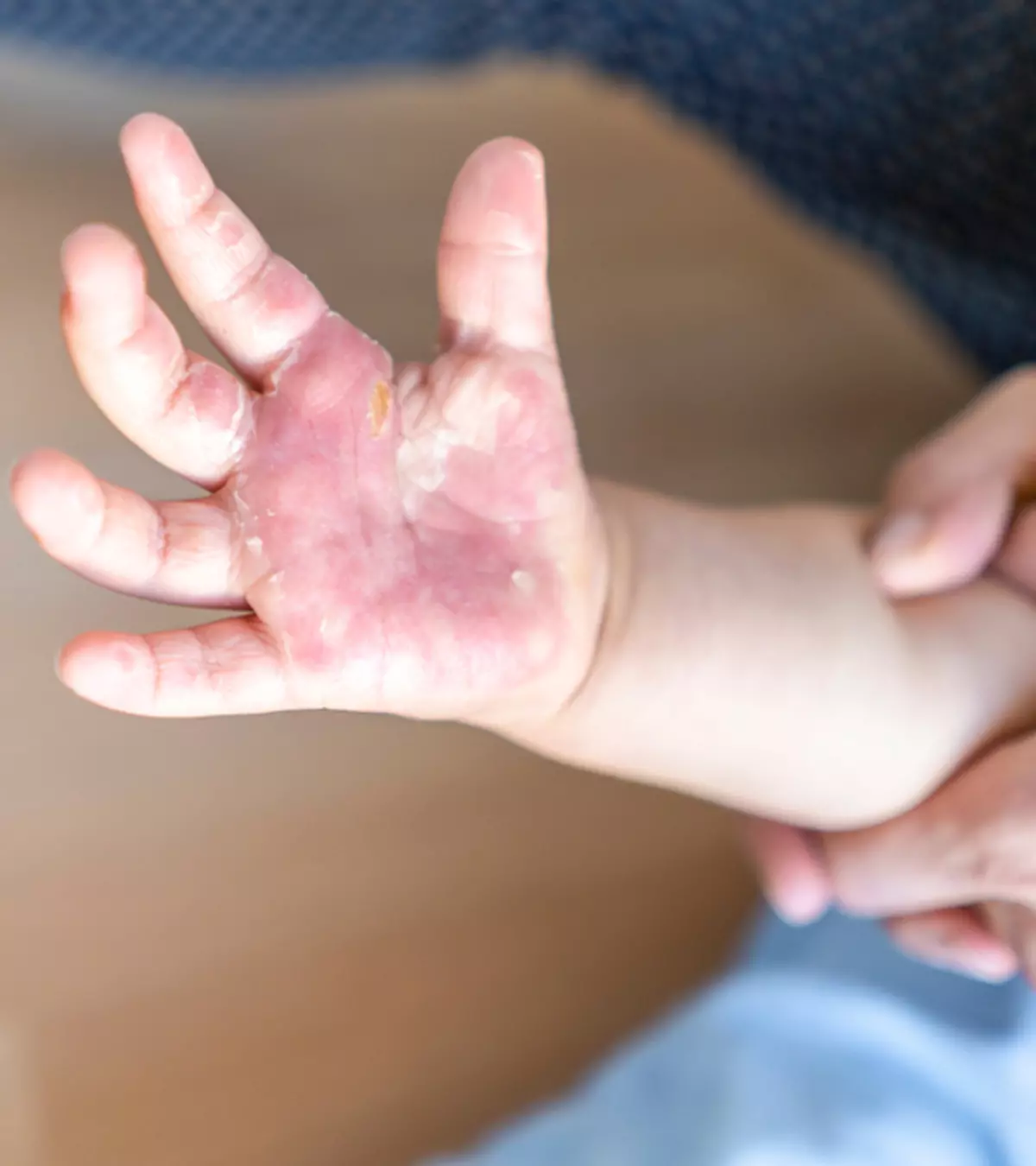Disclaimer [ENGLISH]
What is a burn?
A burn is a heat, chemical or electrical injury to the skin.
What are the symptoms of a burn?
1st degree burn, also called superficial burn
Painful red skin without blisters.

2nd degree burn, also called partial thickness burns.
- Painful red skin with blisters.
- Heals from the bottom up, not from the edges.
- Takes 2 to 3 weeks to heal.
- Small, closed blisters act as a natural bandage.

3rd degree burn, also called a full thickness burn.

- Deep burns with white or charred skin.
- There are no blisters.
- Skin feeling is lost.
- Heals in from the edges.
- Skin graft is usually needed.
How are burns treated?
- Pain medication such as Tylenol and ibuprofen (where age appropriate) can be given as needed.
- Keep wounds as dry as possible.
- Avoid baths, and after showers pat dry.
- Avoid getting the area dirty.
- Avoid picking, scrubbing or aggressive rubbing of the area.
Superficial burns
- Allow air exposure, no need for covering unless your child picks at it.
- Aloe Vera and/or a non-fragrance lotion can be applied.
Partial thickness burns or wounds to face or genitals
- Be sure to apply a topical antibiotic once daily with dressing changes.
- Bacitracin is a good antibiotic option available over the counter.
- Wrap in a bandage that doesn’t stick to the skin. Then wrap in gauze.
- Perform Daily dressing changes.
Full Thickness or wounds with significant debris (example “road rash” or fire pit burns)
- Place thick layer of Silvadene and gauze.
- Silvadene will be provided by your healthcare provider or prescribed to your pharmacy.
- Silver sulfadiazine is good at softening up the debris in the wound. This will make it easier for the debris to be removed with each daily dressing change.
- Stretch netting can be used to keep the dressing in place. Medical tape does not work well when wounds are draining.
- Continue dressing the wound for at least one week or as advised by your child’s primary care provider.
How do I prevent my child from getting burns?
-
Create a kid-free zone.
- Teach younger children to stay at least 3 feet away from your cooking space.
- If you need to watch babies while cooking, place them in a highchair outside of the kid-free zone where you can see them.
-
Keep hot objects out of children’s reach.
- Cook on the back burners of the stove and turn pot handles away from the edge.
- Keep hot foods and drinks away from the edge of your counters and tables.
-
Teach older children how to cook safely.
- Make sure they do not leave the kitchen while cooking.
- Teach them to always use oven mitts or potholders to carry hot pots and pans.
-
Check bathwater temperature.
- Before placing your child in the bath, check the water temperature using the inside of your wrist.
- The water should feel warm to the touch, not hot.
- Watch children around fireplaces.
- The glass around a gas fireplace gets extremely hot when the fireplace is turned on. It can take more than an hour for the glass to cool down after the fireplace is turned off. There is no way to know that glass is hot just by looking at it.
- Keep children away from the fireplace to prevent burns from the hot glass.
When to contact your child’s Healthcare Team:
- Your child’s wound is not healing.
- You notice pus coming from the wound.
- The pain from the wound is getting worse.
- Your child has a fever.
- You think your child needs to be seen.
This publication was adapted from information within American Academy of Pediatrics Patient Education Handouts, and https://www.safekids.org/safetytips/field_risks/burns-and-scalds
Reviewed by: TT D.O, AR D.O., SL M.D. | 05/2024


